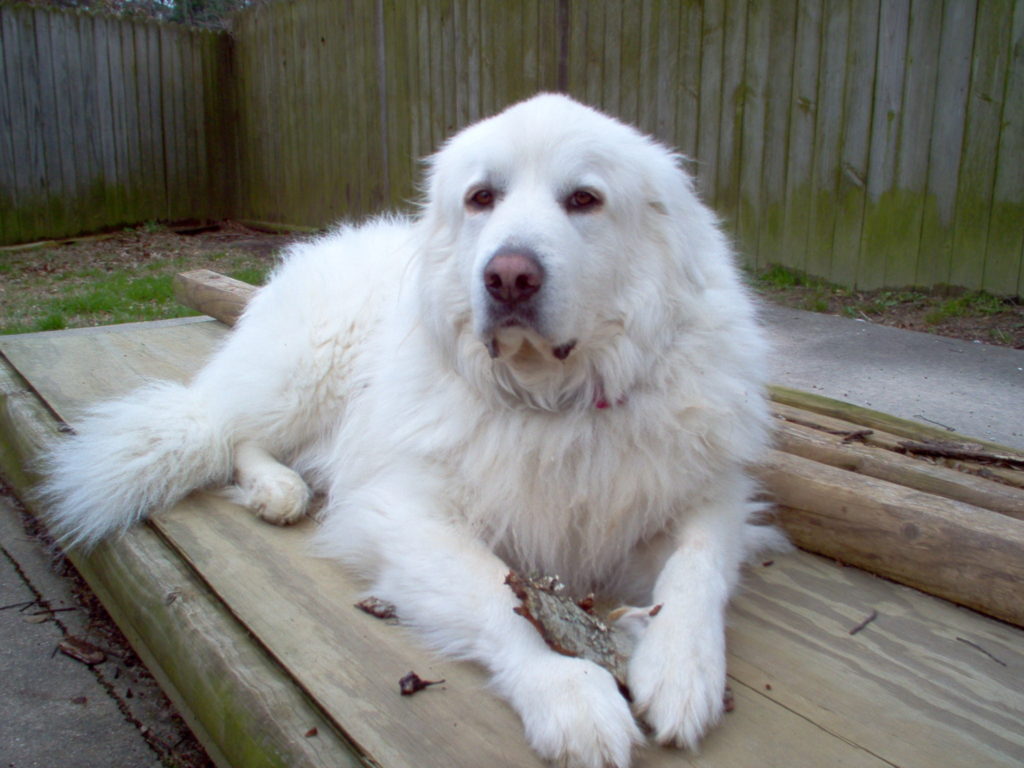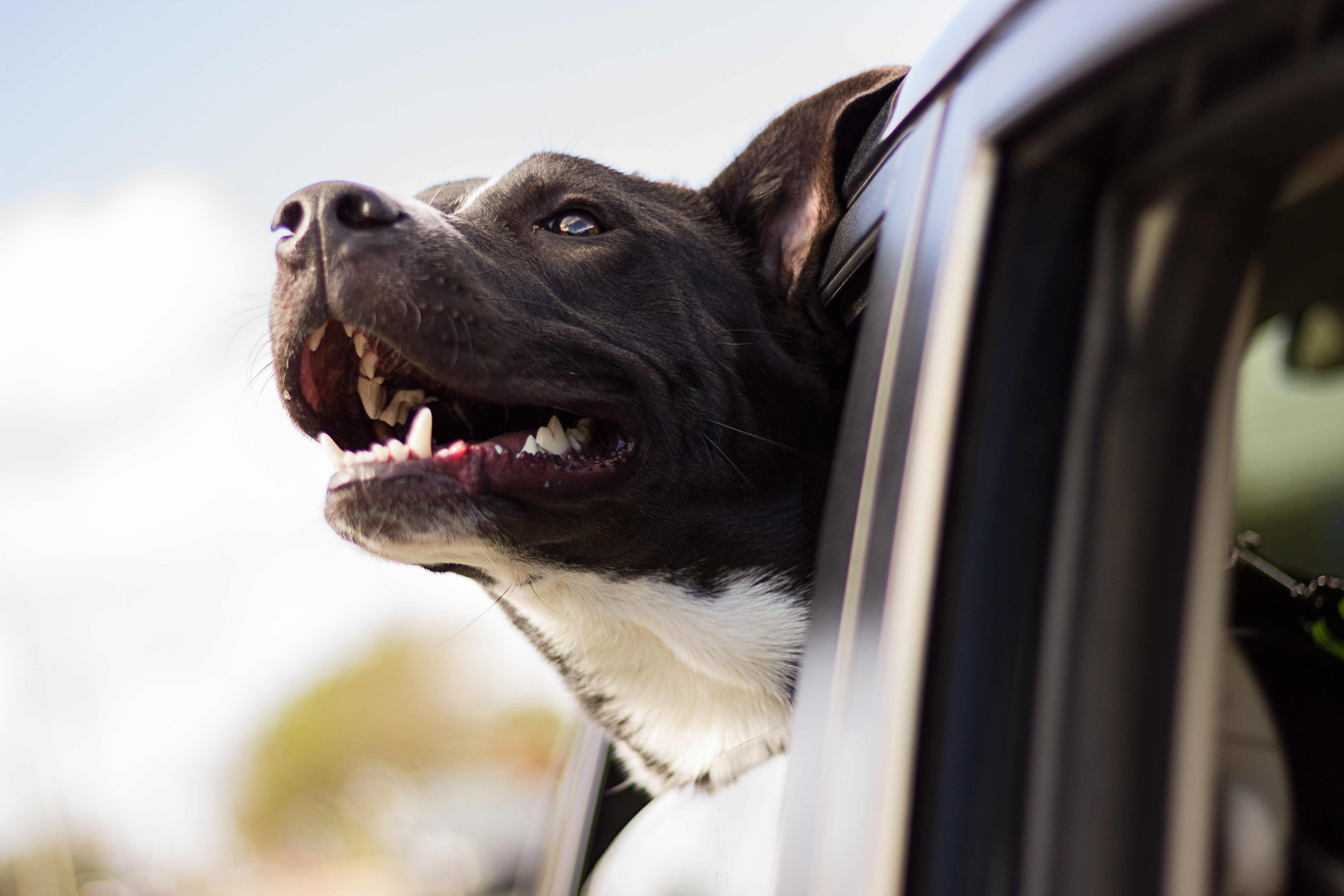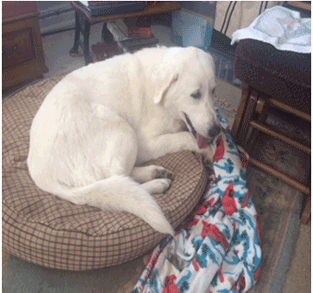
Skylyr
Pyrs are very independent, self-confident, “what, me worry?” types. They would rather see what’s on the other side of that hill than worry about getting lost. If you don’t keep a Great Pyrenees on a leash or in a properly fenced yard or kennel, sooner or later they will exercise their powerful instinct to establish and patrol a large territory and will run off, we promise you that.
So you have 200 acres? The size of your acreage is not a natural barrier or deterrent. And they certainly do not look both ways when crossing streets either! No matter how expert your dog-training skills, you will not be able to “teach” a Pyr not to patrol a large territory, any more than a Retriever can be trained not to retrieve, or a Border Collie not to herd. Great Pyrenees are a guard dog by instinct, not by training! The world is a Pyr’s to guard; thus, they should be kept on lead or in a securely fenced area at all times, not only for their safety and protection, but so that the dog does not become a liability.
Great Pyrenees are very intelligent. This is often interpreted as severe stubbornness. Pyrs are accustom to working on their own, as they were bred to be left alone with the sheep up in the mountain valleys. Thus, unlike many other breeds, they do not always strive to please their owners. Things you consider important may not be the same things your Pyrenees considers important!
Obedience training is a must, as is extreme patience. And don’t let some instructor tell you they can’t be trained; Great Pyrenees can do it, but they need to be convinced that it is in their own best interests to do what you ask. “Because I said so” doesn’t cut it. If you want a dog that will follow your every command, or if you want a “competition” obedience dog, or if you want a great off-lead companion, the Pyrenees is probably not for you.
Great Pyrenees like to see just how much they can get away with, and then try to take it a few steps further. Often an adult dog is a better choice for some people, since puppies of any breed can push you to your limits, and a Great Pyrenees puppy will take it even further!
Because of their natural instinct toward protection, Great Pyrenees can develop an excessive barking problem. Your neighbors might find this behavior distasteful. The continuous bark quite a few Pyrenean love to do is what can make them nearly impossible to keep as pets in urban or semi Rural areas.
Great Pyrenees shed non-stop year-round, making a weekly brushing a ritual. You will probably never again wear black. There are white hairs in Pyr homes and on Pyr people. And you will need a new high-powered vacuum cleaner…dog hair everywhere!
This is a pile of hair brushed out of Gus, a malnourished and neglected rescue dog. Your average well-cared-for Pyr would not shed to this degree.
Caring for a Great Pyrenees is a labor of love. Great Pyrenees REQUIRE affection, kindness and human companionship. A lonesome Pyr is a bored dog, and a bored dog can become destructive. Left outside unsupervised for long periods of time, a lonely Pyr will dig under the fence, unravel the fence, jump or climb over the fence, undo any childproof locks, open the gate, and surely bark endlessly.
Great Pyrenees are extreme introverts and suffer inwardly from any unkind words or act, and yet no dog can be more sensitive or sympathetic to human moods. Pyrs comfort their owners in times of sadness, with gentle understanding, and are always on hand when support is needed. One might ask no more reliable or sympathetic companion than the Great Pyrenees, and surely no more beautiful dog may be found.
When a Pyrenees focuses on the affairs of their family, their powers of deduction are uncanny. Let something out of the ordinary happen, such as packing a suitcase, and a Pyr becomes all eyes and ears. A Pyrenees reads your dress and mannerisms as you read the evening paper — and for much the same reason: to find out what’s going to happen next. The difference is, the Pyrenees is usually right, and you aren’t!
Pyrenees3Great Pyrenees generally get along well with other dogs and household pets. A Pyrenees would much prefer to ignore the harassment of a smaller dog and will usually fight only as a last resort. However, two mature Pyrenees of the same sex often do not get along well together as housepets.
Certainly no other breed is more ideally suited for the role of child’s companion and protector than is the Great Pyrenees. They regard their family’s children as their own (or their “flock”) and exhibit a truly built-in sense of responsibility in watching over them. Although Great Pyrenees are protective of their families, the breed does not recognize children as their “masters.” In the company of well-behaved children, the Pyrenees seems sublimely happy, whether enjoying a romp, a tussle, a game of tag, pulling some kind of conveyance, or merely doing nothing but listening to their chatter. A loving home, especially one with small children, is “Pyrenees heaven!” As always, the relationship between children and dogs must be carefully supervised and monitored by adults.
The Great Pyrenees dog requires standard care for coat, eyes, ears, pads and nails. Pyrs should receive a good brushing at least once a week. Nails, including those on the double dewclaws, should be routinely trimmed. A professional grooming is recommended once every three to four months. A Great Pyrenees should not be shaved, unless a medical reason exists for doing so. The skin underneath their coat is pink and susceptible to sun-burn and lesions (when the protective coat is missing). Great Pyrenees tend to have little “doggy” odor. As a general rule, Pyrs will only drool when they are eating, begging, panting excessively, and/or drinking water. Although uncommon in the breed, Pyrs with a poor bite structure can drool more.
Pyrenees do not require a bed or blanket, since they carry their own with them. Pyrs will nap where they can keep track of the entire household — a spot in the home where they can monitor all exits and, while feigning sleep, know exactly what is transpiring in all corners. Great Pyrenees have a universal habit of lying against doors which open inward against them, but never lie against doors which open outward away from them. Nobody surprises a Pyr!
The food requirements of the Great Pyrenees are a constant source of wonder to the novice in the breed. Due to a calm nature and a low metabolism, the breed requires, when mature, about the same amount of food as a Setter or a Collie, and far less than many smaller more active breeds.
As a breed, Pyrs are remarkably healthy and long-lived. All dogs should be kept fit and trim to eliminate unnecessary health problems. Great Pyrenees have few major genetic problems and usually live to be 10-12 years old in a normal, safe environment. By natural-born instinct, Great Pyrenees guard their home and family with devotion and wisdom, and it is in this environment they will thrive, safe and secure in the feeling they are a beloved family member.


